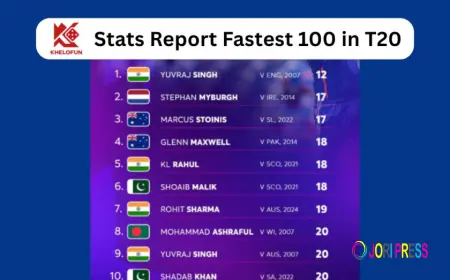How a Performance Management System Boosts Employee Productivity
In today’s competitive business landscape, organizations constantly strive to maximize employee productivity and performance. A Performance Management System (PMS) is a strategic tool that helps companies achieve these goals.

In today’s competitive business landscape, organizations constantly strive to maximize employee productivity and performance. A Performance Management System (PMS) is a strategic tool that helps companies achieve these goals. By systematically managing employee performance, organizations can foster engagement, improve efficiency, and drive business success.
A Performance Management System is more than just an annual review; it is an ongoing process that aligns employee objectives with organizational goals, monitors progress, and provides continuous feedback. This article explores how a Performance Management System enhances productivity and why every business should implement one.
What is a Performance Management System?
A Performance Management System is a structured framework used by organizations to evaluate and improve employee performance. It integrates multiple aspects of human resource management, including employee performance management, goal setting, continuous performance feedback, and talent management systems.
Key features of a Performance Management System include:
-
Setting clear objectives and key performance indicators (KPIs)
-
Tracking employee progress
-
Conducting regular performance appraisals
-
Providing constructive feedback
-
Identifying opportunities for training and development
With these features, a Performance Management System ensures that employees are aligned with organizational goals and understand their role in achieving them.
How a Performance Management System Enhances Productivity
1. Clear Goal Setting and Tracking
One of the primary functions of a Performance Management System is to establish well-defined goals. By implementing goal setting and tracking, employees know what is expected of them and can focus their efforts on high-priority tasks.
When employees have measurable objectives, it creates accountability and encourages them to perform at their best. A Performance Management System allows managers to monitor progress in real time, identify potential challenges, and provide timely guidance.
2. Continuous Performance Feedback
Unlike traditional appraisal methods that rely on annual reviews, a modern Performance Management System provides continuous performance feedback. Employees receive regular insights into their strengths and areas for improvement, allowing them to adjust their work habits promptly.
This ongoing feedback loop fosters a culture of growth, enhances motivation, and reduces the chances of performance issues going unnoticed.
3. Data-Driven Employee Evaluation
With the help of employee evaluation software, a Performance Management System collects and analyzes performance data objectively. This data-driven approach minimizes biases in evaluations and ensures fair recognition of employee contributions.
Metrics such as KPIs, project completion rates, and skill development milestones allow managers to make informed decisions about promotions, raises, and training requirements.
4. Aligning Individual and Organizational Goals
A critical benefit of a Performance Management System is its ability to align individual performance with organizational objectives. By linking employee targets to company goals, employees understand how their work contributes to broader business success.
This alignment fosters engagement and ownership, motivating employees to exceed expectations and deliver exceptional results.
5. Enhanced Talent Management
A robust Performance Management System integrates seamlessly with talent management systems, allowing HR professionals to identify high-potential employees and plan career development paths.
This proactive approach to talent management ensures the organization retains top performers and nurtures future leaders. It also supports succession planning, which is vital for long-term organizational stability.
6. Effective Workforce Performance Monitoring
Through workforce performance monitoring, managers can track team productivity, identify performance gaps, and implement corrective actions promptly. This real-time monitoring ensures that employees stay on track, projects are completed efficiently, and organizational goals are met consistently.
Key Components of an Effective Performance Management System
Implementing a Performance Management System requires a combination of strategy, technology, and culture. The following components are essential for maximizing its effectiveness:
a. Performance Appraisal System
A structured performance appraisal system evaluates employee achievements against predefined KPIs. These appraisals help managers recognize accomplishments, identify training needs, and set future objectives.
b. Goal Setting and Monitoring
A goal setting and tracking mechanism ensures employees remain focused on critical priorities. Goals should be SMART—specific, measurable, achievable, relevant, and time-bound—to provide clarity and direction.
c. Continuous Feedback Mechanisms
Continuous performance feedback keeps employees informed about their progress and areas of improvement. Feedback should be constructive, actionable, and delivered in a timely manner to foster growth and development.
d. Employee Evaluation Software
Modern employee evaluation software automates performance tracking, reduces administrative burden, and generates analytical insights. It ensures accuracy in evaluations and facilitates data-driven decision-making.
e. Integration with HR Software
A Performance Management System works best when integrated with broader HR software solutions. This integration streamlines processes such as payroll, leave management, and learning and development, creating a unified HR ecosystem.
Benefits of a Performance Management System
Implementing a Performance Management System provides several advantages for both employees and the organization:
-
Improved Employee Productivity – Clear goals, ongoing feedback, and performance tracking motivate employees to perform better.
-
Increased Employee Engagement – Recognition and constructive feedback foster a sense of value and belonging.
-
Better Decision Making – Data-driven evaluations enable managers to make informed HR decisions.
-
Talent Retention – Identifying and nurturing top performers reduces turnover and strengthens the workforce.
-
Enhanced Organizational Performance – When employees perform optimally, overall business results improve.
Best Practices for Implementing a Performance Management System
To maximize the impact of a Performance Management System, organizations should follow these best practices:
-
Set Clear Objectives: Ensure that all employees understand organizational priorities and their individual goals.
-
Foster a Feedback Culture: Encourage open communication between managers and employees.
-
Leverage Technology: Utilize employee evaluation software and HR software for efficient tracking and reporting.
-
Regular Training and Development: Provide resources to help employees improve their skills and performance.
-
Monitor Progress Continuously: Use workforce performance monitoring tools to identify and address issues early.
-
Align Performance with Rewards: Link performance outcomes to recognition, promotions, and incentives to motivate employees.
Conclusion
A Performance Management System is a powerful tool that transforms employee productivity and drives business success. By combining employee performance management, continuous performance feedback, and goal setting and tracking, organizations can create a high-performance culture.
Modern businesses cannot afford to rely solely on annual reviews; a comprehensive Performance Management System ensures employees are motivated, accountable, and aligned with organizational objectives. Integrating talent management systems, employee evaluation software, and HR performance tools further enhances the effectiveness of performance management initiatives.
Investing in a Performance Management System is not just an HR decision—it is a strategic business choice. By adopting this system, companies can boost productivity, retain top talent, and achieve sustainable growth.
What's Your Reaction?
 Like
0
Like
0
 Dislike
0
Dislike
0
 Love
0
Love
0
 Funny
0
Funny
0
 Angry
0
Angry
0
 Sad
0
Sad
0
 Wow
0
Wow
0




















































